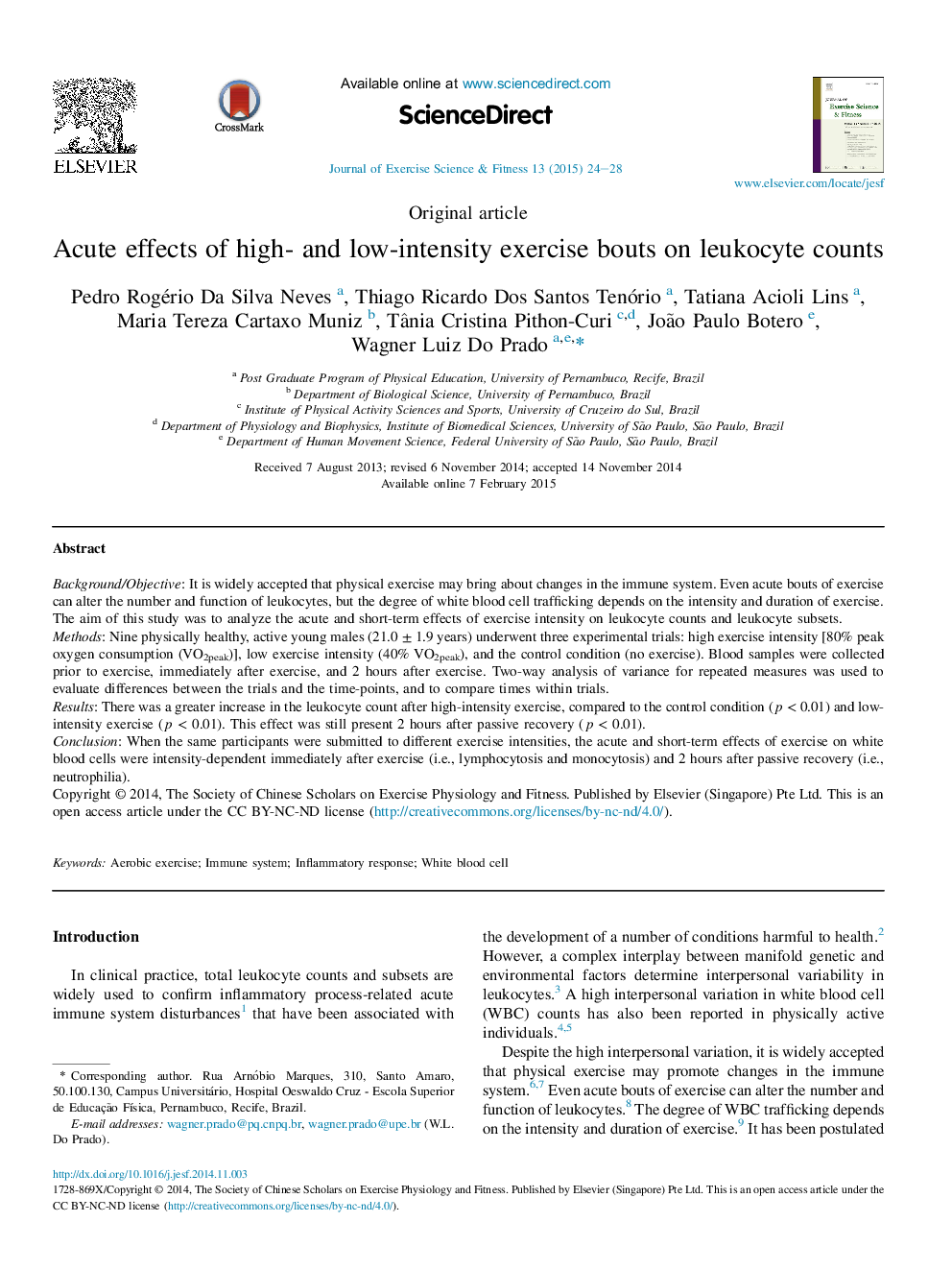| Article ID | Journal | Published Year | Pages | File Type |
|---|---|---|---|---|
| 2739614 | Journal of Exercise Science & Fitness | 2015 | 5 Pages |
Background/ObjectiveIt is widely accepted that physical exercise may bring about changes in the immune system. Even acute bouts of exercise can alter the number and function of leukocytes, but the degree of white blood cell trafficking depends on the intensity and duration of exercise. The aim of this study was to analyze the acute and short-term effects of exercise intensity on leukocyte counts and leukocyte subsets.MethodsNine physically healthy, active young males (21.0 ± 1.9 years) underwent three experimental trials: high exercise intensity [80% peak oxygen consumption (VO2peak)], low exercise intensity (40% VO2peak), and the control condition (no exercise). Blood samples were collected prior to exercise, immediately after exercise, and 2 hours after exercise. Two-way analysis of variance for repeated measures was used to evaluate differences between the trials and the time-points, and to compare times within trials.ResultsThere was a greater increase in the leukocyte count after high-intensity exercise, compared to the control condition (p < 0.01) and low-intensity exercise (p < 0.01). This effect was still present 2 hours after passive recovery (p < 0.01).ConclusionWhen the same participants were submitted to different exercise intensities, the acute and short-term effects of exercise on white blood cells were intensity-dependent immediately after exercise (i.e., lymphocytosis and monocytosis) and 2 hours after passive recovery (i.e., neutrophilia).
